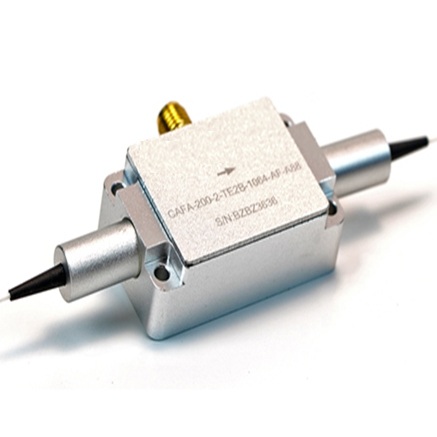Application Raman spectroscopy in VIS/NIR
of a rotating sample excited by a CW laser with external modulator
Conditions
Sample should be pumped only during the time it crosses the laser beam (600 – 60 000rpm)
- repetition rate 10Hz – 1kHz (1 – 100ms period) changing during experiment
- duty cycle 0,7% or larger (constant, independent of rep. rate for a given sample)
- pulse width 7µs – ~1ms, determined by rep. rate and duty cycle
External modulation
- fast binary digital (ON/OFF) with a high extinction ratio
- slow power control, at least one of following types (in priority order)
- by computer (USB, RS232, etc.)
- analog modulation
- manual
Requirements
Laser wavelength (+/- 2 nm): 405, 532, 638, and 785 nm (DPSS or VBG-diode, linearly polarized)
main operation wavelengths – 405 and 638nm, next 532nm, 785nm – only a useful future option
Insertion losses: ≤ 1dB (≥ 80% diffraction efficiency)
Polychromatic operation (quote all possible configurations!):
individual AOM for each laser
and alternatives, e.g.,
# A UV-Vis-NIR AOM for 405 / 532 / 638 /785 (a bit worse performance for 785nm)
# B UV-Vis AOM for 405 / 532 / 638 + NIR AOM for 785
# C UV AOM for 405 + Vis-NIR AOM for 532 / 638 / 785
# D UV-Vis AOM for 405 / 532 + Vis-NIR AOM for 638 / 785
# E UV AOM for 405 + Vis AOM for 532 / 638 + NIR AOM for 785
AOTF are usually a bit too slow
PCAOM can be used in two possible configurations
- common – combined coaxial input and output beams (Fig.1)
- may be possible too – separated input but combined coaxial output beams – a kind of
backward polychromatic deflector (preferred option to simultaneously directly combine
individual laser beams) (Fig.2)
Digital modulation (common for all wavelengths)
external trigger TTL
rise/fall times ≤ 1µs (10-90%)
extinction ratio ≥ 1000:1 (30dB)
trigger gate (option) fast, ~10µs interlock
Laser power control (individual for each wavelengths)
power control range 1-100%, still acceptable option 10-100%
computer control USB interface (RS232 – possible option)
analog modulation bandwidth ≥ 1Hz
analog modulation control voltage 0-1V, or 0-5V, or 0-10V (either one range)
Accuracy, induced noise, stability ≤ 1%
Laser beam diameter (TEMoo) ~1mm, 1,5mm max
focusing can be an option to reduce switching time but only
without deterioration of insertion losses / diffraction efficiency


